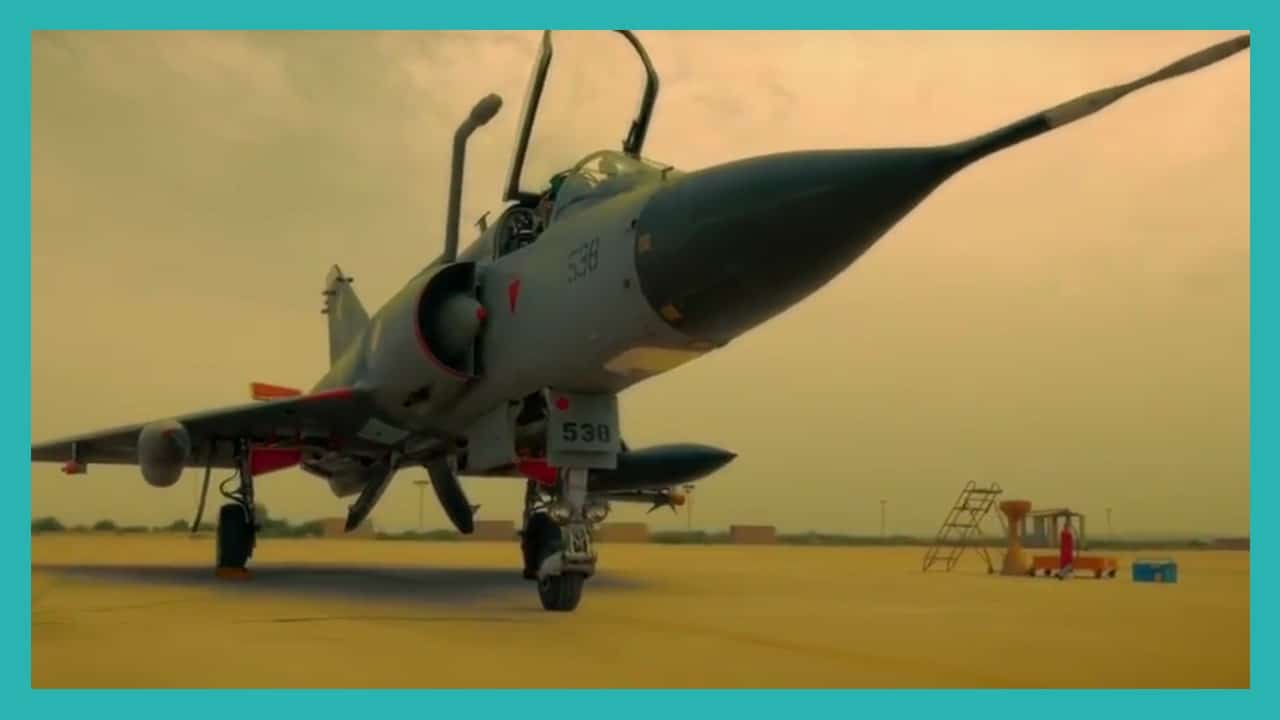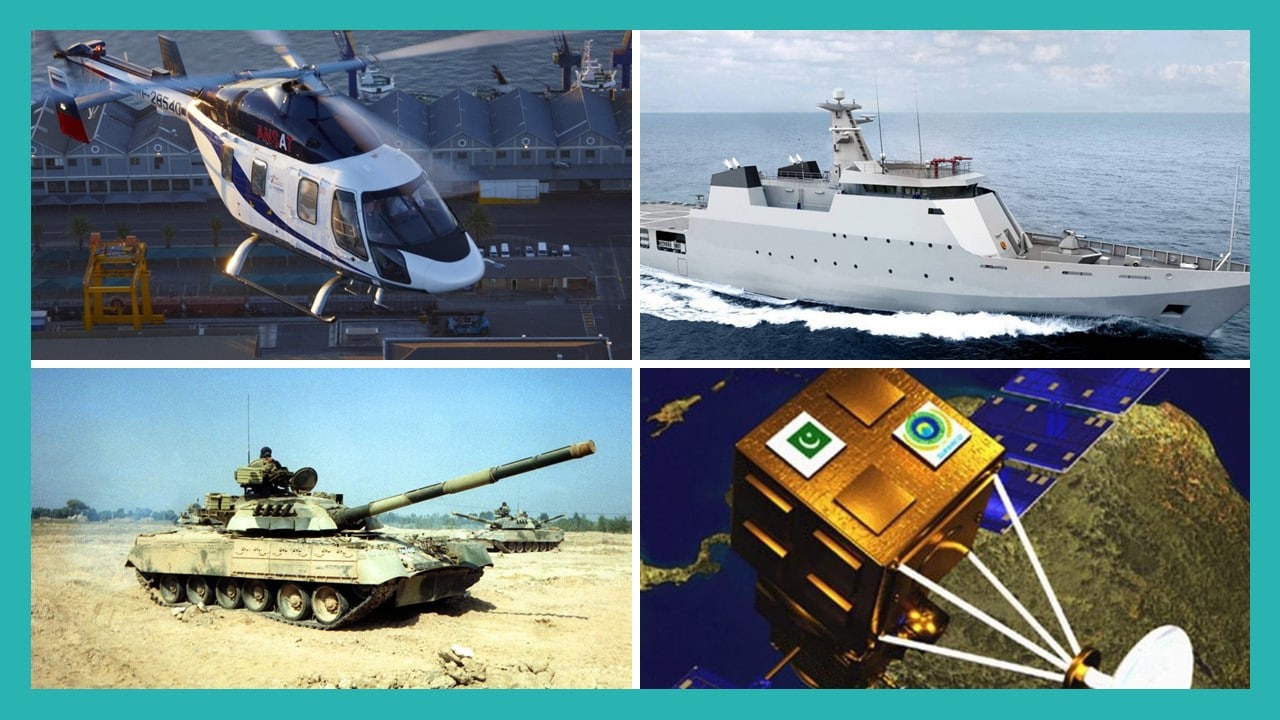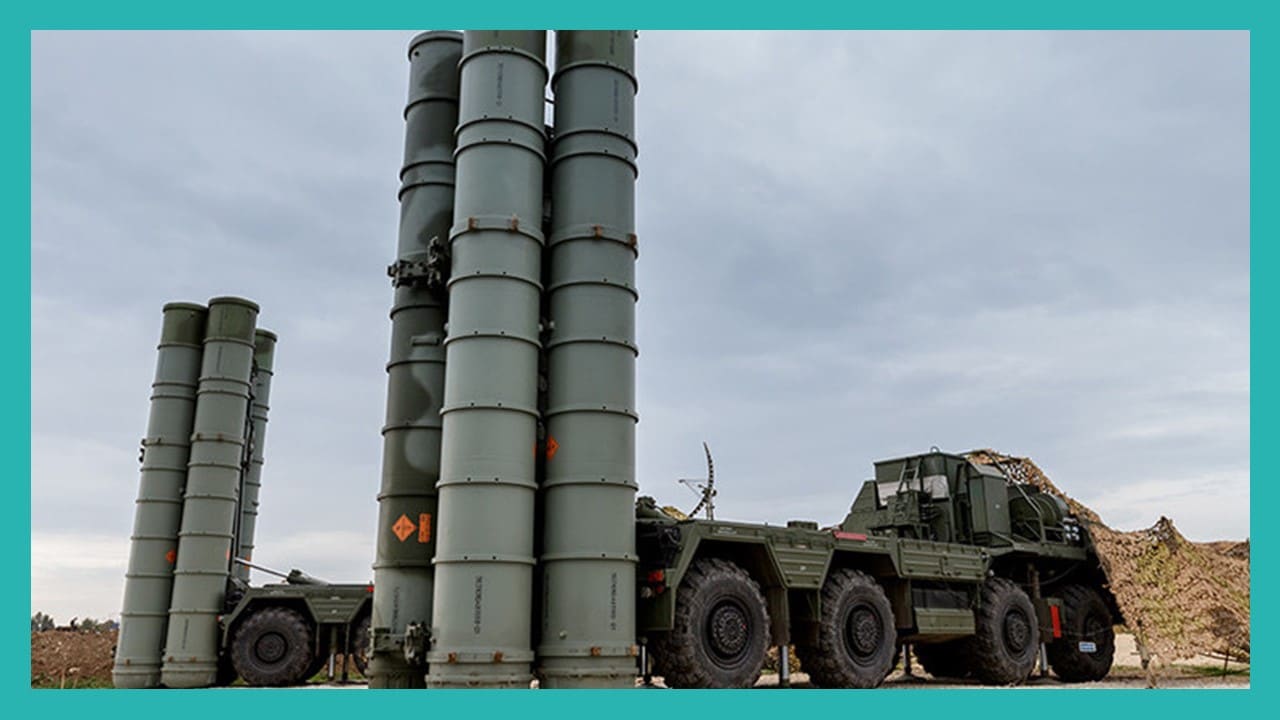2592Views 0Comments

Pakistan’s Mirages: Specialists Enduring out of Necessity
In April 2018, the AFP News Agency published an article detailing its visit to the Mirage Rebuild Factory (MRF) at Pakistan Aeronautical Complex (PAC).[1] The complete AFP article is available on Dawn News, but it provides an insight into the MRF’s activities in keeping the Pakistan Air Force’s (PAF) Dassault Mirage III and 5 fighters serviceable, especially with much of the fleet averaging 50 years in terms of airframe age.[2]
Interestingly, AFP was able to extract the reason why the PAF persists with operating the Mirage III/5, i.e. its continuing value as an effective strike aircraft, which the retired PAF Air Commodore Tariq Yazdani described (to AFP) as a “very agile aircraft capable of penetrating deep into the enemy’s territory without being detected by radar, which makes its sole mission — to drop bombs on the enemy’s position — quite easy.”[3]
Since its introduction to the PAF fleet in the late 1960s, the Mirage III/5 has transitioned from being the PAF’s mainstay high-tech fighter in the 1970s to a complementary asset to the newer F-16 in the 1980s. Today, the Mirage III/5 may not command as much attention as the F-16 and JF-17 as an air-to-air asset, but it is significantly more than just a valuable strike fighter – it is the PAF’s prime strike asset.
This prominence stems from two factors.
First is the straightforward reality that the PAF has not yet been able to secure a suitable successor. The cause primarily stems from a lack of funding (i.e. cash on-hand or financing mechanisms such as a supplier line-of-credit), but a limited pool of willing suppliers with aircraft that can substantively improve upon the Mirage III/5 to warrant the costly shift to a new platform.
Second, the Mirage III/5 is the PAF’s sole delivery platform for key stand-off weapons (SOW), namely the H-2 and H-4 glide-bombs (which are derived from the Denel Dynamics Raptor I and Raptor II – ranges of 60 km and 120 km, respectively) and Ra’ad I and Ra’ad II air-launched cruise missiles (ALCM), which have ranges of 350 km and 550 km, respectively. The Mirage 5PA3 can also carry the MBDA AM39 Exocet anti-ship missile (AShM). Prior to the C-802-equipped JF-17, the Mirage 5PA3 was the PAF’s only AShW asset – it still operates from the Masroor Air Base through the No. 32 Tactical Wing.
The Mirage Rebuild Factory
The PAF established the MRF in 1978. In the subsequent 40 years, the MRF has serviced (as of November 2017) a total of 350 aircraft and 2,280 engines.[4] The PAF has invested considerably in the MRF, essentially building a robust infrastructure base to stretch airframe lives beyond what was intended by Dassault.
However, the extent to which MRF is undertaking depot-level maintenance, repair and overhaul (MRO) work today is the culmination of four decades of gradual capacity growth at PAC. When it began its MRO work, PAC relied on imported parts – originally from the original equipment manufacturer (OEM) and then from surplus Mirage III/5 aircraft from Australia, France, Libya and other places – to ensure and/or extend airframe lives.[5] PAC reduced this reliance (albeit, not entirely) by undertaking some manufacturing work, particularly of wing components and parts for the Atar-09C turbojet engine.[6]
It appears that since the 1980s, PAC accumulated a series of turnkey repair facilities from Dassault – i.e. Wing Refurbishing Facility, Fuselage Structural Repair and Engine Overhaul Wing.[7] Granted, the Mirages are old platforms, but compared to other aging platforms – such as the C-130B/E, AH-1F/S and in time the F-16A/Bs – PAC is essentially the best place to replenish certain aerostructures (such as the wings’ ribs).[8] In fact, forthcoming investments – such as a structural health management system from Critical Materials in Portugal – will boost the MRF’s ability to gauge the integrity of the Mirage III/5’s aerostructures (and in time, of the Saab 2000, JF-17 and other aircraft) so that it can optimize its resources while maintaining or even improving the overall maintenance process.[9]
Operational Deployment & Future
It is important to note that the Mirage III/5 itself was designed as a comparatively lightweight fighter. It is not a ‘deep-strike fighter’ in terms of the range and payload flexibility a Flanker-series or even a medium-weight platform such as the Mirage 2000, F-16 or J-10 would offer. However, through a combination of building a deep support infrastructure, introducing SOWs and leveraging its geostrategic realities.
In terms of exploiting geostrategic realities, Pakistan’s immediate proximity to India means that the PAF’s Mirage III/5s can deploy SOWs without needing fuel-tanks to sustain a long-range flight (there is no need for it). The presence of forward operating bases, civilian airstrips and makeshift runways using highways enable the PAF to deploy and recover its aircraft with relative ease. Thus, the inherent limitation in combat radius is not an issue for the PAF in terms of airstrikes on nearby targets, albeit targets within the coverage provided by the PAF’s SOW arsenal. The Ra’ad II provides the most in this respect at 550 km.
Furthermore, the increase of infrastructure suitable for operating aircraft could enable the PAF to diffuse its Mirage III/5 fleet extensively, which could result for a distributed attack element that is not limited to a few areas for take-off and landing. Granted, should the Ra’ad be adapted for use on the JF-17, the JF-17 will also yield similar capabilities. However, the PAF has not shown anything to suggest that ALCM launch – i.e. a strategic element – will be integrated to the JF-17 in the near-term.
Thus, the PAF’s Mirage III/5 fleet must endure. The JF-17 has lifted the Mirages’ air-to-air, short-range air-to-ground and even anti-shipping duties, effectively leaving the Mirage III/5 as a specialist delivery aircraft for the Ra’ad-series ALCM. However, there is a limit to how much the Mirages can endure, especially with the long-term fraught with a markedly scarcer supply of spare aerostructures and engines (which the PAF has mostly consumed to sustain its own Mirage fleet).
In fact, the PAF itself acknowledged the looming obstacle in the early 2000s when it committed to procure 36 FC-20 – i.e. J-10A – multi-role fighters from the Aviation Industry Corporation of China (AVIC). According to the PAF’s own official book – i.e. The Pakistan Air Force – 1998-2008: A New Dawn – the FC-20s were intended for “deep-strike”.[10] In an earlier Quwa Premium article, we surmised that the PAF’s Mirage III/5s – along with the F-16s – form a dedicated offensive force. The Mirage III/5s would handle the strike role while the F-16s would provide extended air-to-air capability.
Originally, it appeared that the FC-20 was intended to serve in this strike role (the F-16 is limited in terms of its munitions configurability due to end-user restrictions by the US). In fact, it made complete sense for the PAF to select the FC-20 considering that it was available, affordable (be it directly in cash or via a loan from China) and accessible in terms of ultimately configuring it for the strategic role (i.e. carry Ra’ad). But it is curious that the PAF did not bring the FC-20 program to fruition.
Granted, Pakistan has fiscal challenges, especially through the late 2000s and early 2010s when the fiscal exchequer was constrained by austerity measures (so as to repay loans). However, in 2015 Pakistan began to resume certain big-ticket programs, at least those with strategic and deterrence value – i.e. inking the order of eight Hangor (II) air-independent propulsion (AIP)-powered submarines from China. It is accepted that the Hangor (II) AIP submarine will be the primary carrier of the Babur submarine-launch cruise missile.
It is curious that this was not extended to the FC-20. The fiscal constraint could have been remedied via a loan or – in case of a trade-off – reducing the submarine order. However, the PAF – at least the previous leadership under Air Chief Marshal (ACM) Sohail Aman – did not retreat from the call for another fighter. In April 2017, ACM Aman stated: “Pakistan definitely has to induct new aircraft. We have both Chinese and Russian options.”[11] However, the apparently available avenue was not availed, despite the PAF itself previously accepting it (i.e. the FC-20) as a viable successor to the Mirage III/5.
In lieu of a near-term successor (ahead of the next-generation fighter planned under Project Azm) to the Mirage III/5, the PAF could look to extend the range of the Ra’ad-series. This could occur in one or several ways, i.e. reducing the weight of the airframe, increasing fuel-capacity or acquiring a more efficient engine to power the ALCM. In either scenario, the idea is to extend the range by either reducing the fuel’s burn-rate (i.e. weight reduction and an efficient engine) and/or having more fuel.
However, the Ra’ad II appears to be directly comparable in its range to the MBDA Storm Shadow and KEPD – i.e. its analogous counterparts in Western Europe. A possible obstacle to further range extension could be design limitations as a whole – i.e. the airframe’s material composition (e.g. composites vs. metals) to the engine and flight control system. In effect, new ALCM design could be required. This need not be an obstacle in of itself; to utilize an internal payload bay, the ALCM would need to be smaller and lighter than the Ra’ad. In effect, the ALCM must involve in-concert with the next-generation platform for the PAF to achieve its intended level of nuclear (and to an extent, conventional) deterrence credibility.
[1] “Thrifty at 50: How the Pakistan Air Force keeps ageing Mirages flying”. AFP (via Dawn News). 29 April 2018. URL: https://www.dawn.com/news/1404605 (Last Accessed: 04 May 2018).
[2] Ibid.
[3] Ibid.
[4] Alan Warnes. “Masters of Mirage maintenance”. Air Forces Monthly. November 2017.
[5] Ibid.
[6] Ibid.
[7] Ibid.
[8] Ibid.
[9] Press Release. “Critical Materials Selected by Pakistan Aeronautical Complex to Deliver Advanced DTA/SHM Technologies”. Critical Materials. 22 June 2017. URL: http://www.critical-materials.com/en/media/short-news/posts/short-news-1/critical-materials-selected-by-pakistan-aeronautical-complex#.Wu-3B4gvyUl (Last Accessed: 04 May 2018).
[10] Alan Warnes. “The Pakistan Air Force – 1998-2008: A New Dawn”. 2009. p18-20
[11] “Two fronts – one mission.” Bol Narratives. Interview by Amir Zia of Air Chief Marshal Sohail Aman. 01 April 2017. URL: http://www.bolnarratives.com/two-fronts-one-mission/ Last accessed: 12 December 2017


